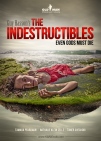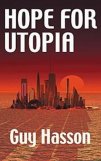The Indestructibles is a 45-min science fiction film currently in production. It’s low-budget, intended for the internet, and is an epic film about superheroes… with a twist never seen before in a superhero flick or comic book. I wrote it and am now in the process of directing it.
The Apex Blog is kind enough to host the monthly Indestructibles film journal monthly blog. The first entry was just posted, regarding the background of the project. Over the next few months, once a month, we’re going to go over the auditions process, the rehearsals, the shooting, the post, and everything that might happen in the middle. (I don’t know what will happen – most of the process hasn’t happened yet).
Here are the first few lines:
A couple of months ago I decided enough’s enough. It’s time to embark on a new adventure.
It’s time to create a science fiction epic film.
I just needed to find a way to do it with no budget. Why? Well, allow me to show you my reasoning through a series of flashbacks.
Flashback: It’s seven years ago. I’m sitting in a café in front one of the country’s most influential producers, trying to convince him to produce a horror mini-series for TV I wrote and wanted to direct. At the same time, he’s spending more than an hour trying to convince me to change aspects of the script to something he can produce. Why couldn’t he produce it? His bottom line was (I’m paraphrasing): “I can’t put your show on TV because the audience doesn’t like horror. How do I know that the audience doesn’t like horror? Because there are no horror shows on TV.”
To read the entire article, click here.
If you want to be kept updated regarding The Indestructibles production, including film journal entries and the online release, join the mailing list by sending an empty email to this address with the subject heading ‘The Indestructibles’.






